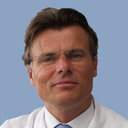Daytime sleepiness in patients with obstructive sleep apnea and severe obesity: prevalence, predictors, and therapy.
Từ khóa
trừu tượng
BACKGROUND
We sought to determine prevalence and predictors of excessive daytime sleepiness in patients with severe obesity with a body mass index (BMI) > 35 kg/m(2) and obstructive sleep apnea (OSA) with an apnea-hypopnea index > 15/h.
METHODS
The study population consisted of 245 obese OSA patients with a BMI > 35 kg/m(2), who were retrospectively recruited from 3256 consecutive patients who underwent polysomnography at our sleep laboratory between 2006 and 2009. Baseline clinical characteristics and polysomnography results of these 245 patients were compared between patients with and without excessive daytime sleepiness, which was diagnosed in the presence of an Epworth Sleepiness Scale score (ESS) ≥ 11.
RESULTS
A total of 123 of 245 study patients (50.2 %) had an ESS ≥ 11. Patients with an ESS ≥ 11 were younger and less often unemployed or retired compared with patients with an ESS < 11. Polysomnography revealed a longer total sleep time (TST), higher sleep efficiency, and shorter sleep latency in patients with ESS ≥ 11. In addition, obstructive apneas during TST as well as oxygen saturations < 80 % occurred significantly more often in patients with versus without an ESS ≥ 11. Improvement of daytime sleepiness after initiation of continuous positive airway pressure (CPAP) therapy occurred more often in patients with versus without ESS ≥ 11 (93 versus 73 %, p < 0.01).
CONCLUSIONS
Obese patients with OSA and excessive daytime sleepiness are characterized by younger age, longer TSTs, more frequent obstructive apneas, and oxygen desaturations < 80 % compared with patients without excessive daytime sleepiness. Excessive daytime sleepiness can be improved in more than 90 % of patients using CPAP therapy.



